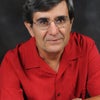Greeks invented the atomic theory in the fifth century BCE. Leucippus and Democritus developed the first scientific model of the fundamental unit of the universe: the atom.
They imagined matter and the cosmos had two basic ingredients: atoms and the void, both eternal: an infinite number of invisible, impenetrable and indivisible atoms move in the infinite void, creating and destroying countless worlds.
The French scientist Pierre Gassendi revived the Greek atomic theory in the seventeenth century. The theory sparked and nourished chemistry and physics. Indeed, in early twentieth century, quantum mechanics studied the atoms and their components: protons, electrons and neutrons.
Actually, "atomic" scientists in America used their theoretical understanding of the atoms for the construction of the atomic and nuclear bombs. World War II accelerated that process.
Physicists at Columbia University dreamed up the atomic bomb. They used the electromagnet of a cyclotron in increasing the speed of atomic particles to 25,000 miles per second. Then on January 25, 1939, they split a uranium atom through fission and chain reaction, the mechanisms for exploding atomic bombs.
Physicists understood the military implications of their handiwork. Splitting the uranium atom was leading them to war. They worked day and night in "enriching" uranium, making it ready for fission, chain reaction, and explosion.
Starting in 1939, the US moved forcefully but secretly in a race to build an atomic bomb before the Germans did. This was the Manhattan Project. Three out of four physicists in 1941 were working on the bomb. Some 2,000 scientists were doing defense work in secret military towns all over America. The result of this concentrated military effort was the successful manufacturing of the atomic bomb and the atomic bombing of the Japanese cities Hiroshima and Nagasaki in August 1945.
The nuking of Japan caused consternation among some Manhattan Project scientists. One of them at Columbia University, who knew the secrets of the Manhattan Project, but had not worked on the bomb, was Selig Hecht. He was very angry at the dropping of the bomb on Japan, accusing America of moral barbarism.
"But of what avail is this knowledge [of the atom] if we use it to destroy cities and people, to devastate the countryside, and to shatter the very structures and men that made possible this knowledge and civilization?" Hecht asked.
Democritus would have agreed with Hecht. The Greek atomic theory was subverted. Instead of becoming a key for the understanding of how nature works, its American masters used it to militarize science and create a weapon of colossal killing power.
Hecht is cited in "Almighty: Courage, Resistance, and Existential Peril in the Nuclear Age" by Dan Zak (Blue Rider Press, 2016). This is a book of extraordinary importance. It is a timely and riveting story of how and why America built the bomb, and what the bomb did to America, Japan, and the world.
Zak, a reporter for the Washington Post, documents the bomb ('godlike force of destruction') had ominous domestic consequences: billions of dollars paid to a handful of unaccountable and irresponsible contractors; deep corruption of Congress, the White house, and the Pentagon; extensive uranium and plutonium pollution of the bomb towns; disease and premature death among workers building the bomb and several thousand deaths among those living downwind from bomb testing.
He also highlights the lives of three courageous Plowshare protesters who, in July 2012, infiltrated the Fort Knox of Uranium, the Y-12 National Security Complex in Oak Ridge, Tennessee. The activists included a Catholic nun, 82 years old, a Vietnam War veteran, age 63; and a housepainter, 57.
The anger of these peace activists went all the way to the testing and deployment of the bomb.
On July 16, 1945, America exploded the first atomic bomb in the Apache land of New Mexico. The explosion became, first, white light that filled the whole desert sky. Physicist I. I. Rabi, who watched the explosion ten miles away, said the bomb light 'blasted,' 'pounced,' and 'bored its way right through you.' Harvard University president James Conant also observed the explosion at a ten-mile distance from ground zero. The white light of the explosion stunned him. He thought the 'white light' was 'like the end of the world.'
An orange fireball followed the white light. General Thomas Farrell got scared. He wrote about the 'strong, sustained, awesome roar which warned of doomsday and made us feel that we puny things were blasphemous to dare tamper with the forces heretofore reserved to The Almighty.' Harvard physicist Kenneth Bainbridge said, 'Now we're all sons of bitches.'
Bainbridge is right. Despite the anguish and fear from the explosion of the first bomb, and despite the proof of the genocidal nature of atomic weapons from their explosion over Japan, America let the bomb industrial-military complex shape the country and, eventually, the world. The massive investment in Oak Ridge continued in more than the enrichment of uranium. Oak Ridge became a factory of atomic and nuclear weapons.
The mantra after the war was to stay ahead of the Soviets (Russians).
The Pentagon made the bomb its sacred symbol. In the early 1960s, Pentagon's "first strike" against the Soviet Union and China would have killed six hundred million people.
Then the 1962 Cuban missile crisis almost annihilated the world. But this brushing with death did not alter bomb production. In 1963, the US had 28,133 nuclear bombs. America had become, according to Martin Luther King, 'the greatest purveyor of violence in the world.'
American leaders to this day want nuclear weapons for "defense." They have budgeted more than $ 1 trillion for their "modernization."
General Kevin Chilton, commander, US strategic command, 2007-2011, said guarding nuclear weapons demands perfection. But, he admitted, 'We are not perfect.'
Time has come to continue the work of Michael Gorbachev and Ronald Reagan: abolish these weapons from the face of the Earth.
Read "Almighty." Its message is current and extremely urgent.
